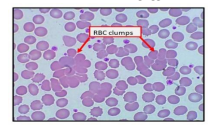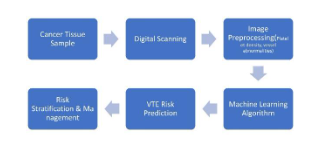Reporting Breast biomarkers using AI based algorithms – experience of a large reference la-boratory
Presented in Emirates pathology, digital pathology Conference Holiday Inn Dubai, Al Barsha, UAE & Virtual
Speaker Name: Dr. Rajiv Tangri
Category: Oral Presentation
Biography: Dr. Rajiv Tangri completed his MD Pathology from MGIMS, Sewagram, Nagpur University. He is Technical Director of Histopathology & Cytopathology with Dr. Lal PathLabs, India. He has published more than 10 articles in different peer reviewed journals.
Objective: The digital revolution has taken center stage in both clinical medicine and biomedical research. Digital telemedicine, radiology, and cardiology have replaced traditional subjective diagnostic modalities in their respective specialties. Pathology, the interpretation of disease patterns under the microscope, has not until recently begun to embrace this digital revolution. For more than 150 years since the time of Virchow, pathologists have diagnosed diseases based on their subjective interpretations of visual patterns produced by passing light through translucent tissue sections. Because the interpretation of these patterns is subjective, interobserver, intraobserver variability and fatigue variability often confound accurate disease interpretation. The Whole slide imaging and creation of epithelial-recognition algorithms (ERAs) and specific-recognition algorithms (SRAs) that could identify and quantitate immunocytochemical staining patterns and specific histologic features have catalysed the progress and wider acceptance of digital pathology.
Breast cancer is the leading cause of cancer-related deaths in females, and the rate of disease continues to rise as a result of a higher life expectancy worldwide combined with environmental and genetic factors. Prognostication as well as treatment decisions in Carcinoma breast largely depend on the report of breast biomarkers i.e. Estrogen receptor (ER), Progesterone receptor (PR), HER2 & Ki67. These reports are quantitative and minor differences especially for the borderline cases can make significant difference in treatment decisions. Despite the evaluation of staining results being performed by highly trained expert pathologists, limitations of scoring include subjectivity and poor resolution of dynamic range of signal intensity due to the limited ability of human eye to accurately capture intensity differences, particularly at the lower ends of detection. AI based digital pathology platforms have now overcome the subjectivity of visual assessment and allow accurate quantification by computer-assisted image analysis.
At Dr. Lal PathLabs we are using VisioPharm AI algorithms to report all our breast biomarkers. We have reported more than 4000 cases of breast biomarkers using AI VIsiopharm algorithms since its launch in 2020. In this paper we present our experience of implementing Visiopharm algorithms. This required multidisciplinary approach and certain changes at pre scanning level. Extensive validation was done for each pathologist using these algorithms basis CAP protocols. This has significantly improved the accuracy as well as reproducibility of our reports.
Upcoming Conferences;
- 14th Emirates Pathology, Digital Pathology & Cancer Conference
More Details: https://pathology.universeconferences.com/
Submit your abstract/research papers/case- study here: https://pathology.universeconferences.com/submit-abstract/
Attend as a Speaker/Poster/Delegate In-person kindly register here: https://pathology.universeconferences.com/registration/
Attend as a Speaker/Poster/Delegate virtually kindly register here: https://pathology.universeconferences.com/virtual-registration/ - 12th World Digital Pathology & AI UCGCongress
More Details: https://digitalpathology.ucgconferences.com/
Submit your abstract/research papers/case- study here: https://digitalpathology.ucgconferences.com/submit-abstract/
Attend as a Speaker/Poster/Delegate In-person kindly register here: https://digitalpathology.ucgconferences.com/registration/
Attend as a Speaker/Poster/Delegate virtually kindly register here: https://digitalpathology.ucgconferences.com/online-registration/



